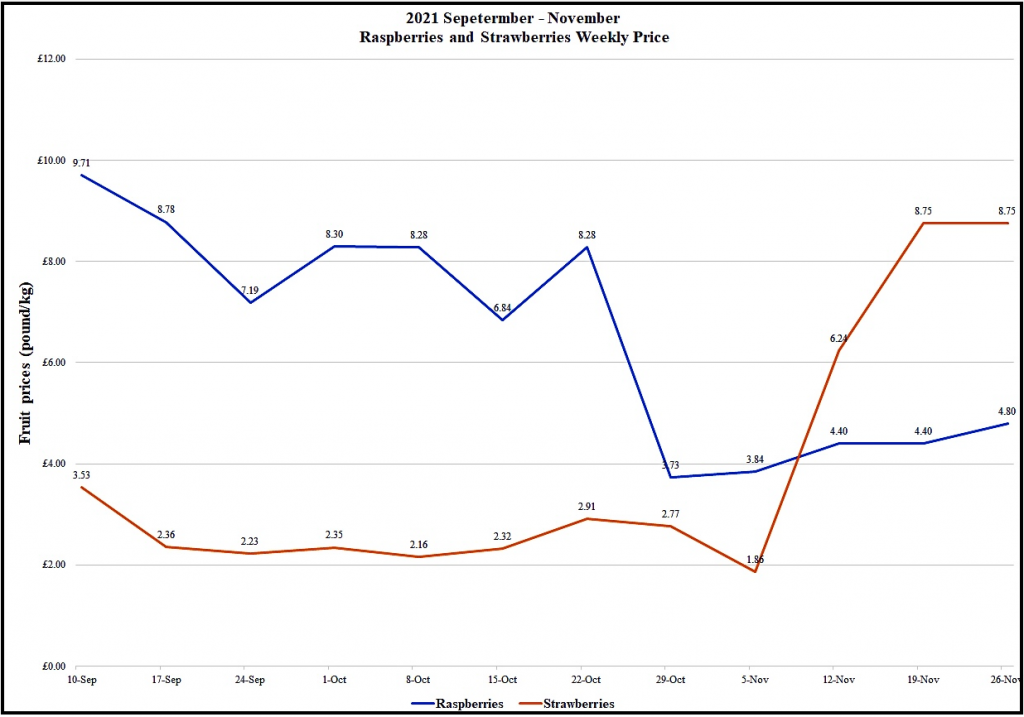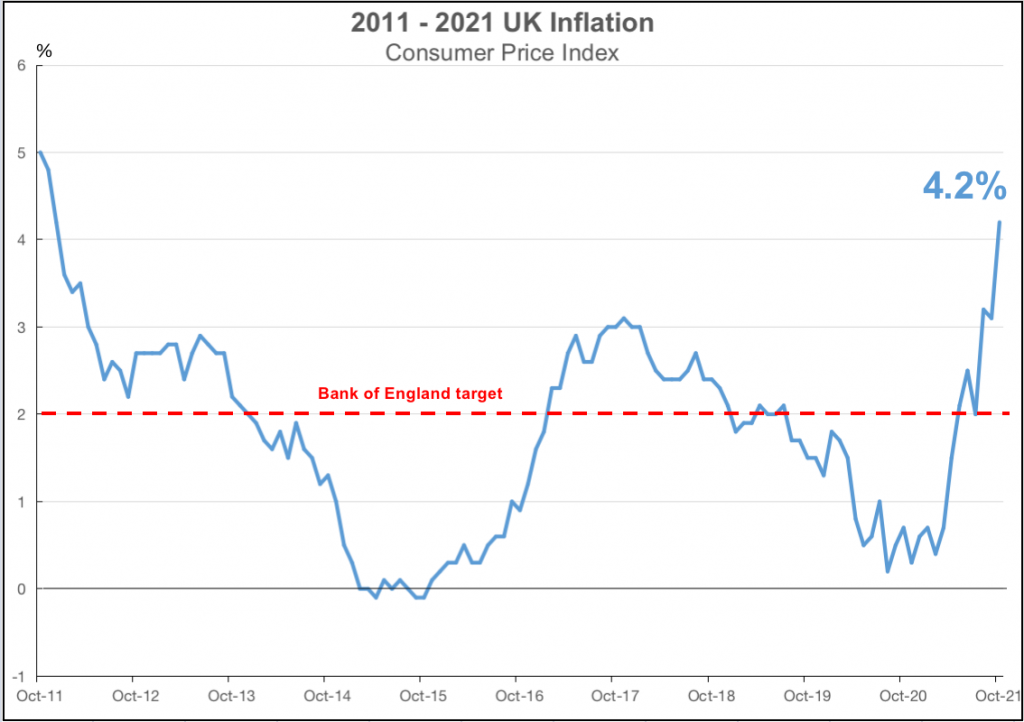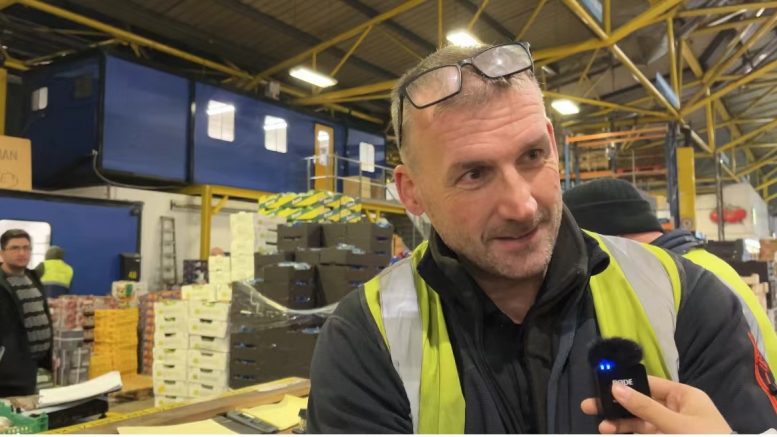Clifford Hart, a salesman at New Spitalfields Market for 36 years, said the prices for fruits and vegetables have been badly affected by the Covid-19 pandemic.
New Spitalfields Market in East London offers the widest range of fresh fruits and vegetables, from smelly but incredibly tasty durian to juicy and delicious yellow pitaya, mini-sized eggplants and black carrots.
Most fruits and vegetables are imported from EU countries such as Spain and the Netherlands, while exotic products are sourced around the world from West Africa to Southeast Asia.
“ One thing that has increased is sea freight, anything coming from China or South Africa. The price of containers is ever so much dearer, increased around 50 percent,” Clifford said.
According to a report by UK Department for Environment, Food and Rural Affairs, the price for strawberries rose sharply from £1.85 per kilogram to £8.75 per kilogram in November 2021, an increase by almost five times.

In the run-up to Christmas, the demand for fruits and vegetables increases, while the average price for these products continues to rise.
In addition, petrol prices hit a record high, which significantly increased the costs of transporting fruits and vegetables.
Some of them become more expensive in winter, as cold weather significantly affects plant growth, Clifford added.
Inflation means fruits and vegetables are getting pricier as well as the cost of living.
What is inflation?
Inflation is the rate at which prices rise over time. For example, If the cost of a £1 box of strawberries has increased by 10p, then the inflation rate for strawberries is 10 percent.
The higher the inflation rate, the more money consumers have to spend to get the same goods.
UK Inflation has been rising since the Covid-19 pandemic
In October 2021, UK inflation reached 4.2 percent, the closest to its highest level in 10 years.
The Bank of England (BoE) predicted that UK inflation would remain at this level through the winter and that prices for core goods would continue to rise.

The increase in inflation has led the BoE to take greater measures to stop inflation from spiralling out of control, aiming at increasing interest rates.
Consumer Price Inflation (CPI) is expected to peak at around 5 percent in April 2022.
Huw Pill, BoE’s chief economist, said at a conference hosted by the Economics Observatory and the Festival of Economics: “There is no quick fix, and that lack of a quick fix means some patience will be required.”
Video and Words by: Zhen Guo | Subbing: Marion Pichardie


Be the first to comment on "Inflation means fruits and vegetables are getting pricier"